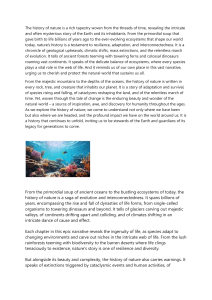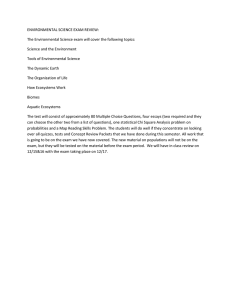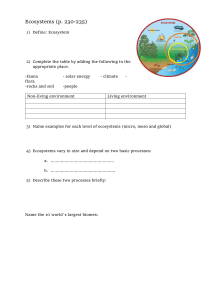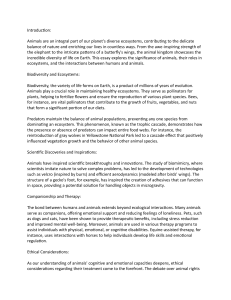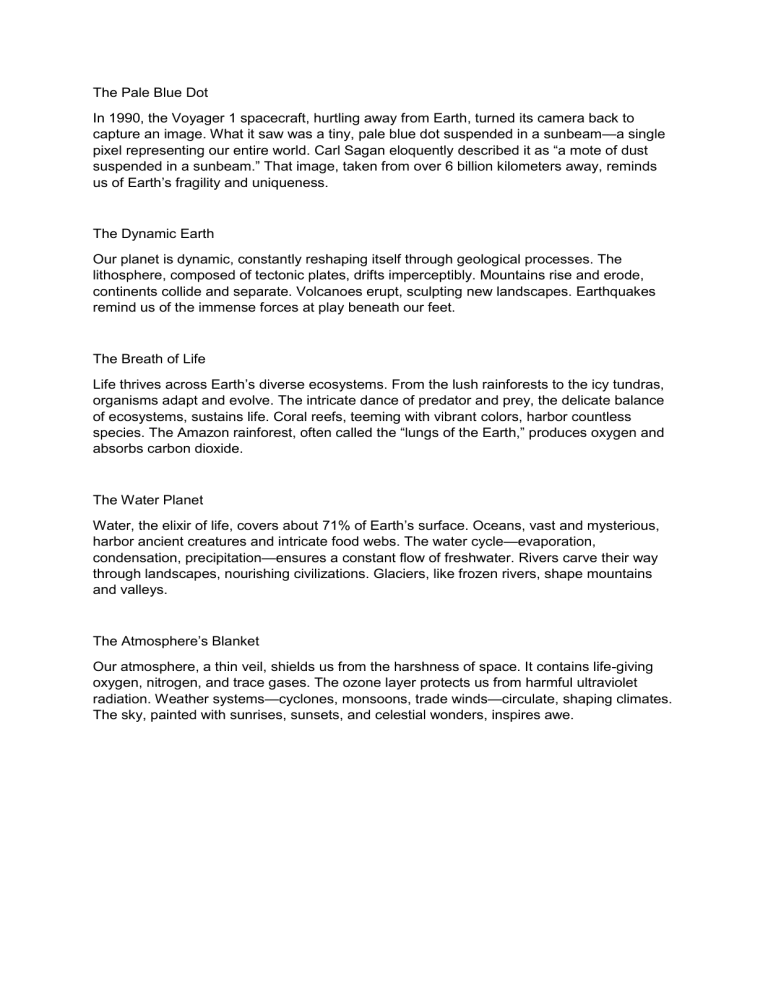
The Pale Blue Dot In 1990, the Voyager 1 spacecraft, hurtling away from Earth, turned its camera back to capture an image. What it saw was a tiny, pale blue dot suspended in a sunbeam—a single pixel representing our entire world. Carl Sagan eloquently described it as “a mote of dust suspended in a sunbeam.” That image, taken from over 6 billion kilometers away, reminds us of Earth’s fragility and uniqueness. The Dynamic Earth Our planet is dynamic, constantly reshaping itself through geological processes. The lithosphere, composed of tectonic plates, drifts imperceptibly. Mountains rise and erode, continents collide and separate. Volcanoes erupt, sculpting new landscapes. Earthquakes remind us of the immense forces at play beneath our feet. The Breath of Life Life thrives across Earth’s diverse ecosystems. From the lush rainforests to the icy tundras, organisms adapt and evolve. The intricate dance of predator and prey, the delicate balance of ecosystems, sustains life. Coral reefs, teeming with vibrant colors, harbor countless species. The Amazon rainforest, often called the “lungs of the Earth,” produces oxygen and absorbs carbon dioxide. The Water Planet Water, the elixir of life, covers about 71% of Earth’s surface. Oceans, vast and mysterious, harbor ancient creatures and intricate food webs. The water cycle—evaporation, condensation, precipitation—ensures a constant flow of freshwater. Rivers carve their way through landscapes, nourishing civilizations. Glaciers, like frozen rivers, shape mountains and valleys. The Atmosphere’s Blanket Our atmosphere, a thin veil, shields us from the harshness of space. It contains life-giving oxygen, nitrogen, and trace gases. The ozone layer protects us from harmful ultraviolet radiation. Weather systems—cyclones, monsoons, trade winds—circulate, shaping climates. The sky, painted with sunrises, sunsets, and celestial wonders, inspires awe.
